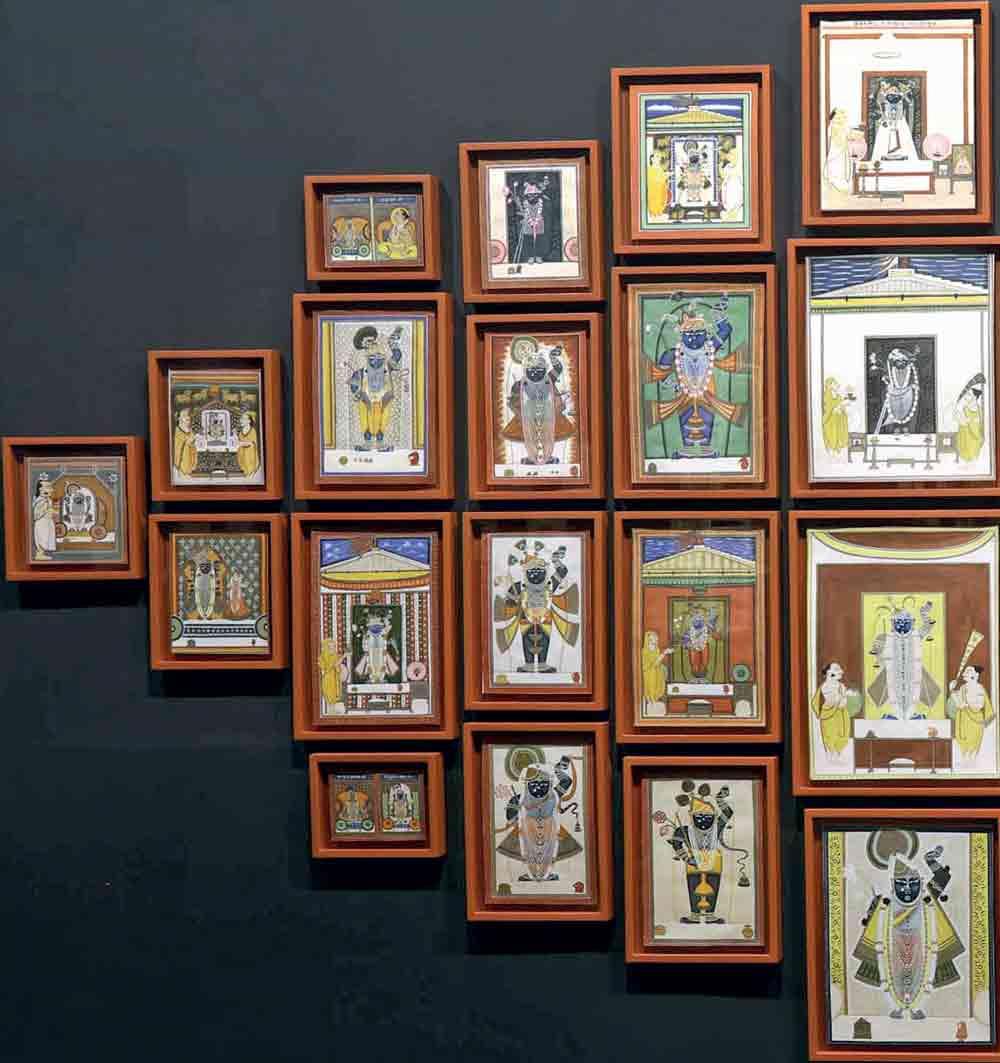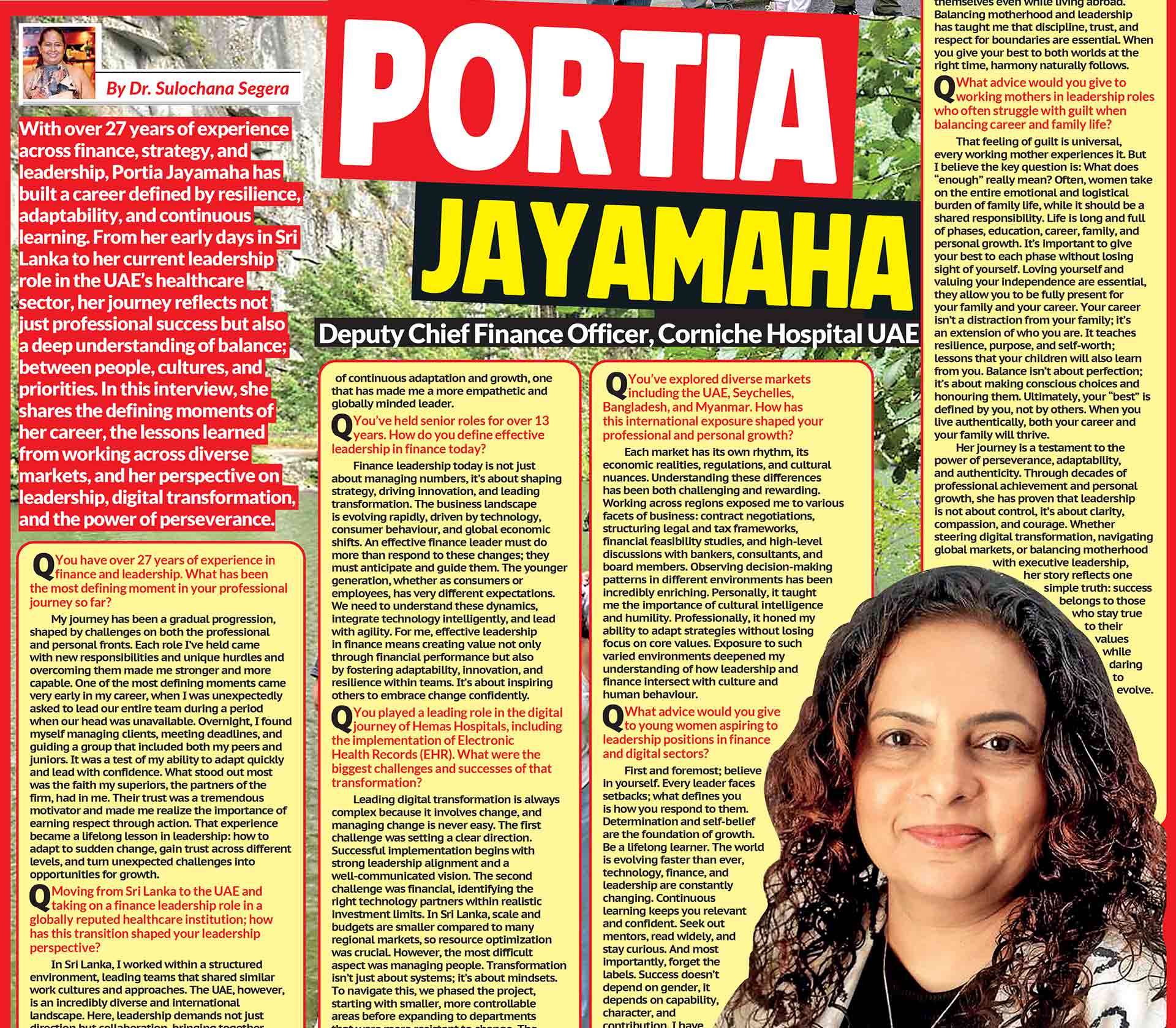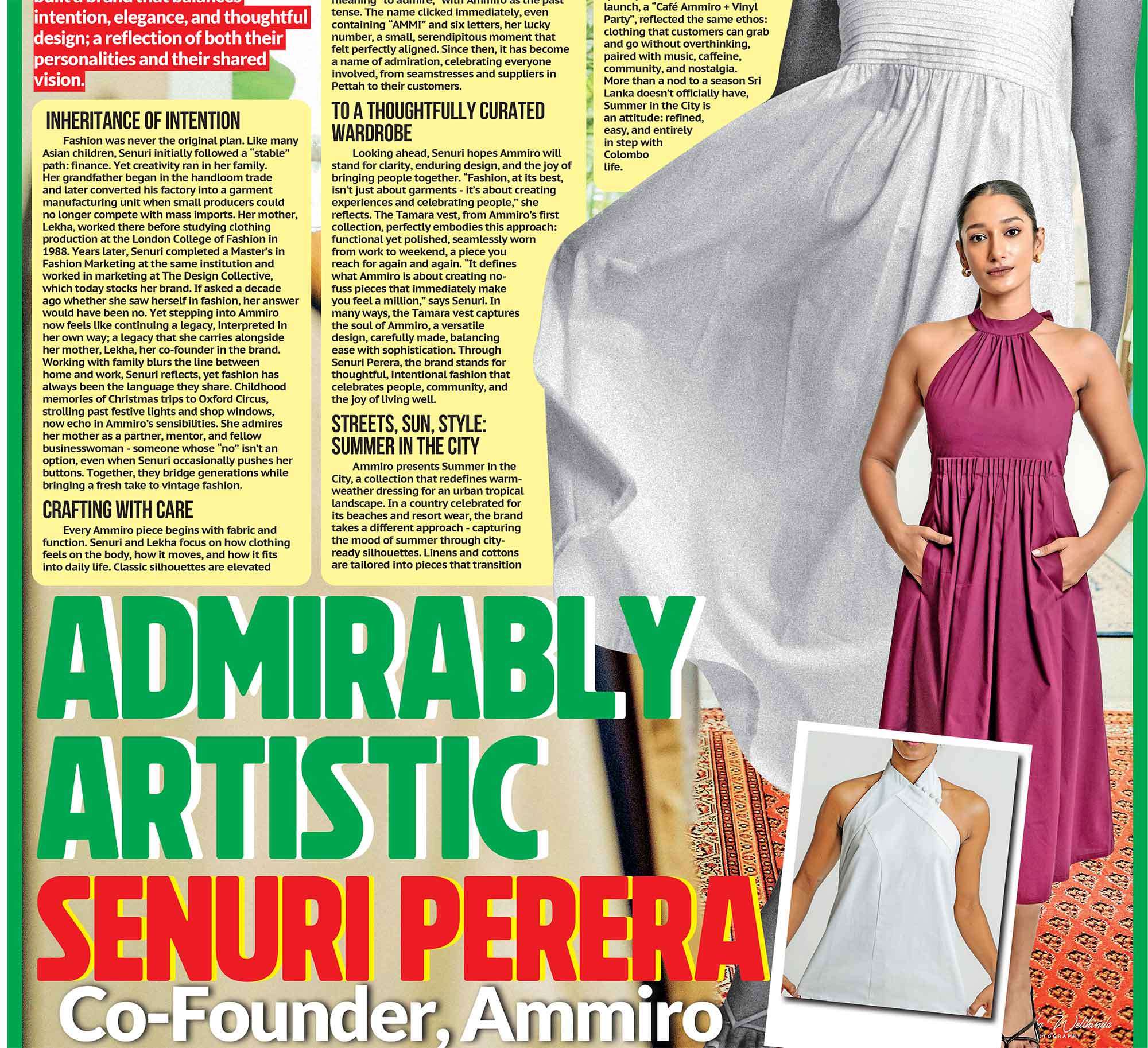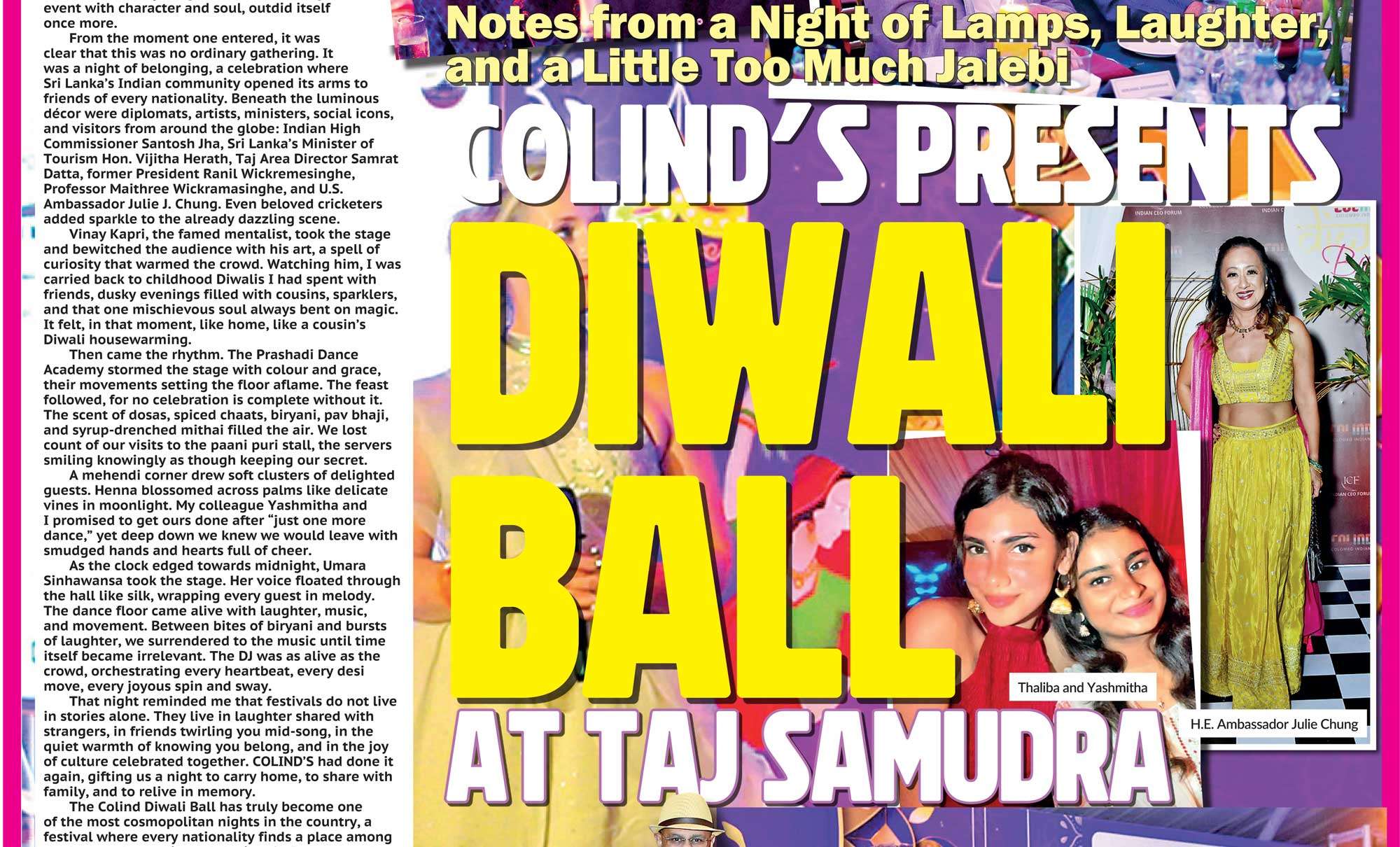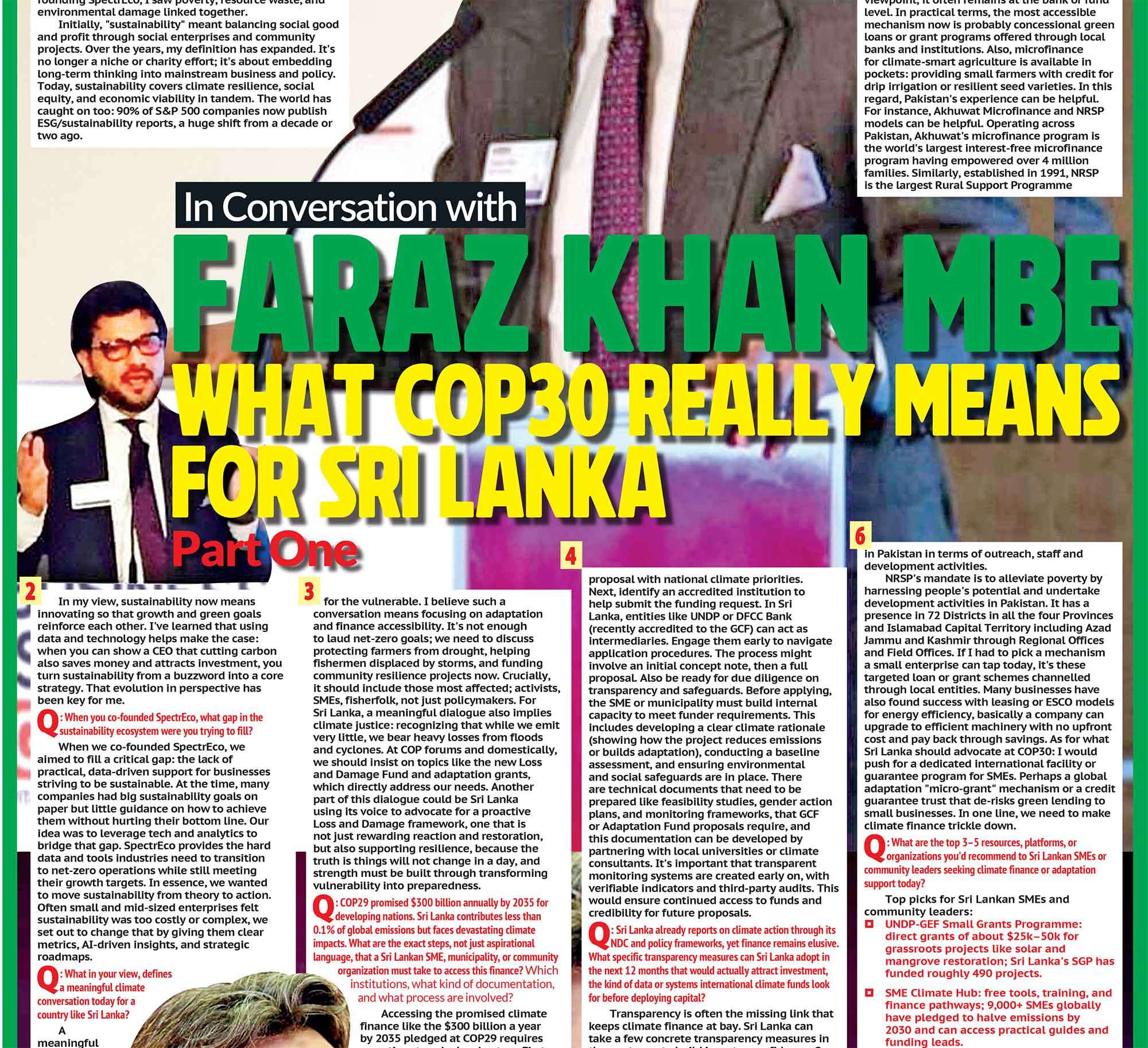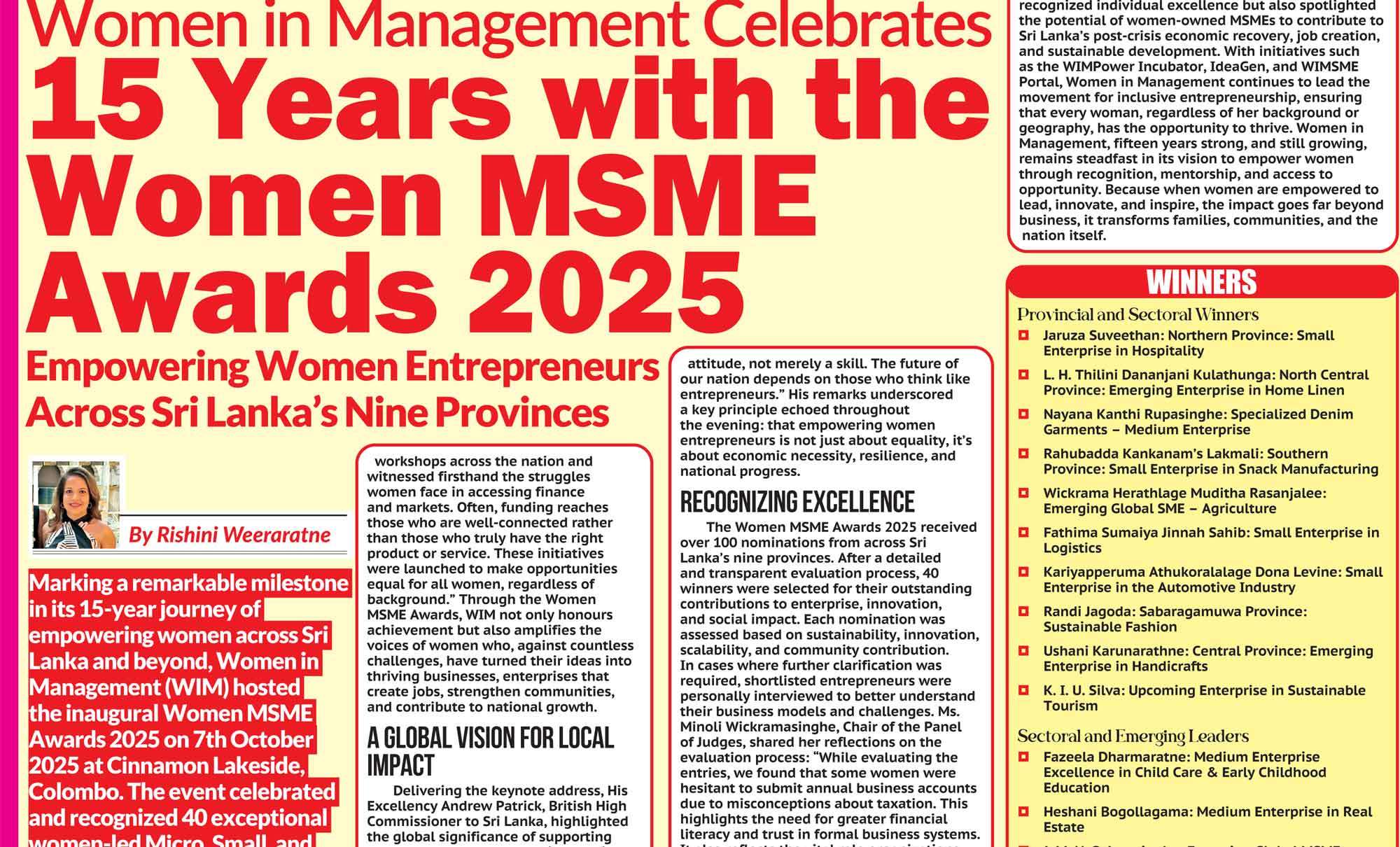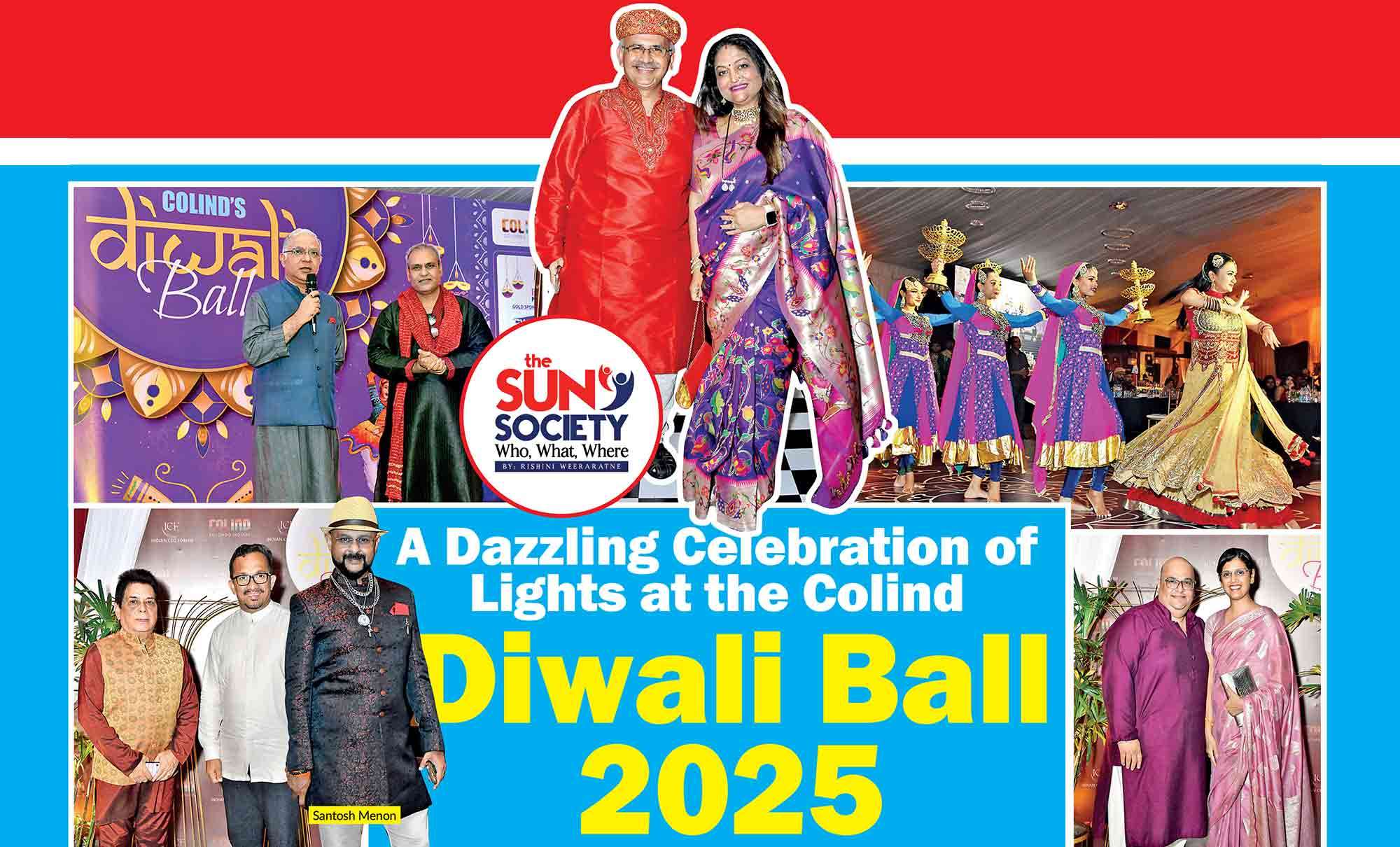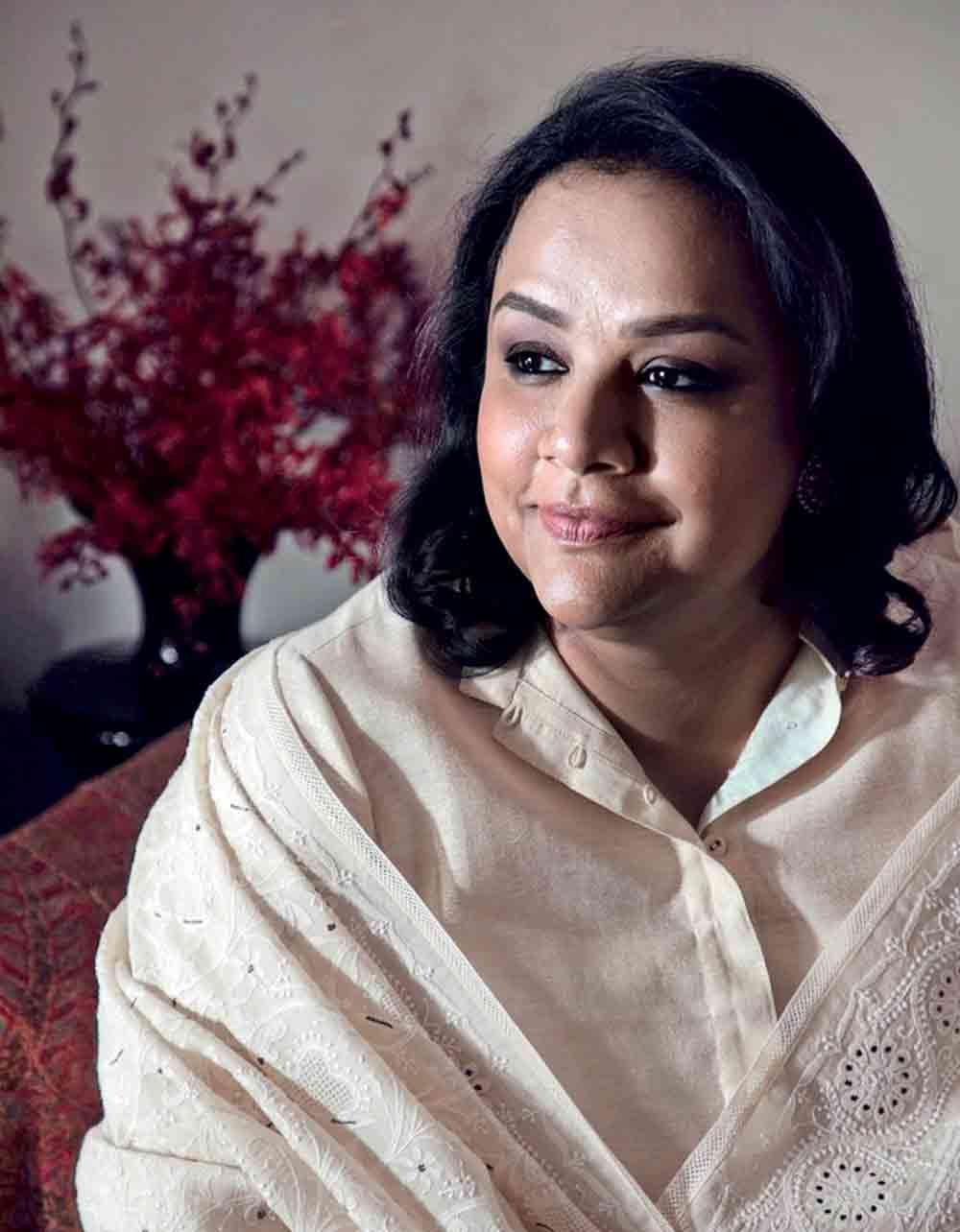
Pooja Singhal is quietly but powerfully reshaping how the world sees traditional Indian art. Born and raised in Udaipur, a city steeped in spiritual and cultural legacy, Pooja’s lifelong engagement with Pichwai, a devotional art form tied to the worship of Shrinathji, has evolved from collecting rare works to founding Pichvai Tradition and Beyond, a pioneering initiative for the revival, preservation, and evolution of this sacred practice. With a deeply collaborative, curatorial approach, she’s redefined what it means to conserve tradition while speaking to contemporary sensibilities. Her most recent triumph is the acclaimed ‘Feast, Melody & Adornment’ exhibition in London, an ambitious showcase that positions Pichwai not as a relic, but as a living, breathing expression of Indian identity. I was introduced to Pooja Singhal by Anshu Bahanda, founder of Wellness Curated and a fellow columnist at the Daily Mirror. On a warm summer morning in Marylebone, we met at a quiet café tucked away from the bustle of London. Over coffee and conversation, Pooja spoke with striking candour about her journey, reflecting on the challenges of leading cultural change as a woman, and what it means to let heritage evolve without losing its soul.
Q You come from a family deeply rooted in Udaipur’s cultural traditions. How did your upbringing influence your interest in Pichwai art?
My mother was a passionate collector of traditional art, and I grew up surrounded by hand-painted textiles and temple artworks. Traders and craftspeople would visit our home, and it was through her discerning eye that I first encountered Pichwai, not just as temple decor, but as living art. Being so close to Nathdwara, the shrine of Shrinathji, I absorbed the devotional language early, but it was my mother’s quiet reverence that taught me to look deeper. That foundation eventually became a lifelong commitment.
Q What was the turning point that made you shift from a corporate or entrepreneurial path to dedicating yourself to cultural preservation?
It was a gradual and very personal journey. What started as collecting a few pieces turned into a deep inquiry. I became fascinated by how the same iconography shifted across time and geography. But I also saw the form’s fragility, traditional materials disappearing, master artists aging without successors, and mass-produced imitations diluting its essence. Founding Pichvai Tradition & Beyond was my way of intervening meaningfully. Preservation is important, but curation and revival give it life.
Q As a woman leading a revival movement in a traditional art space, what challenges have you faced and how have you navigated them?
When I set up the atelier, I was working within a male-dominated lineage, father-to-son, with no precedent for women. Proposing structural and creative changes required immense sensitivity. My approach was never top-down. I built trust over time, showing deep respect for the tradition. Being a woman influenced my method, it was collaborative, process-oriented, and deeply empathetic. Whether restructuring the creative flow or curating exhibitions, I’ve always tried to gently honour the past while ushering in thoughtful evolution.
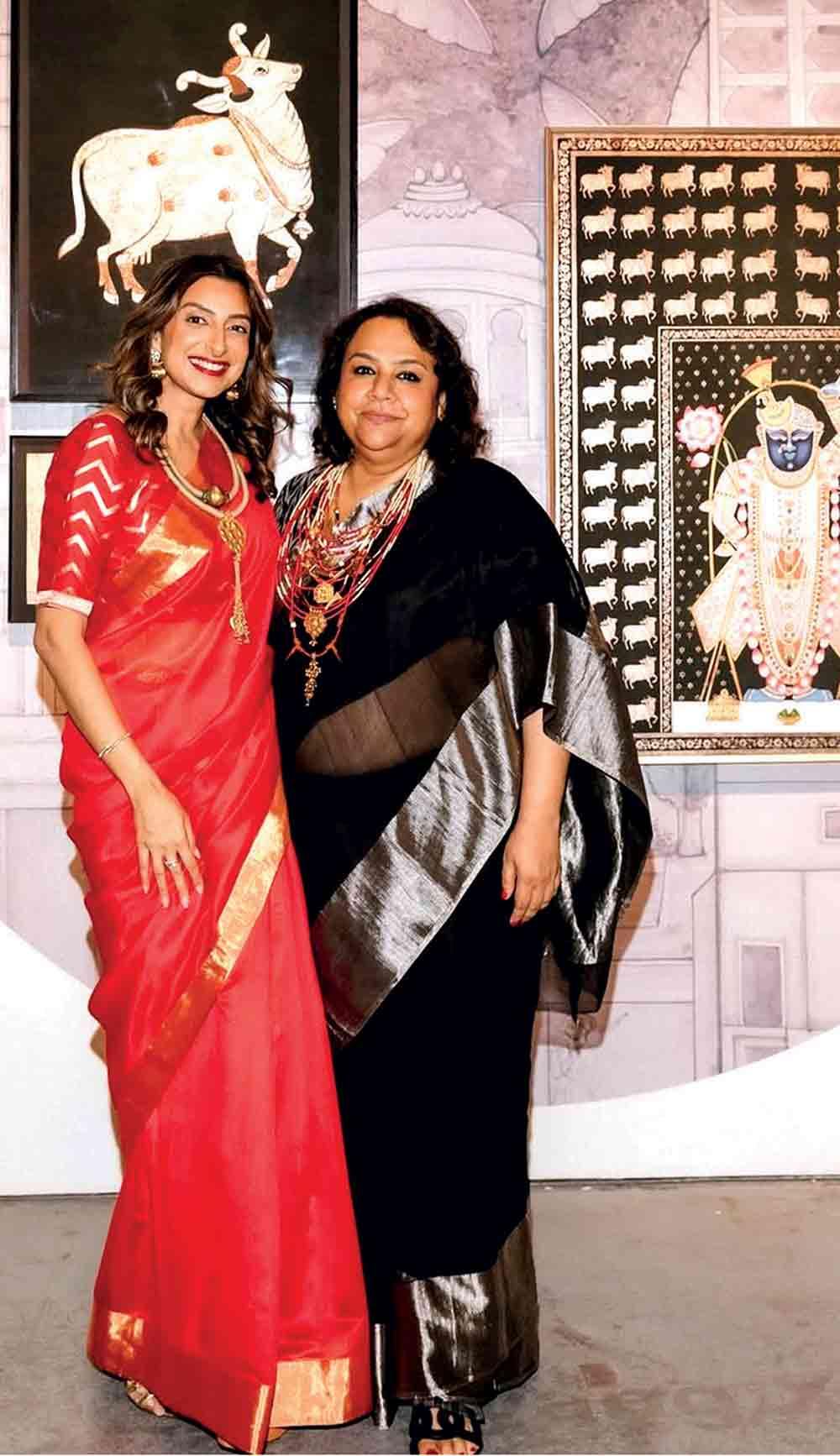
Divia Thani and Pooja Singhal
Q What inspired you to start Pichvai Tradition & Beyond in 2015, and what was your vision at the time?
By 2015, I had already spent years collecting and studying Pichwai. What struck me was the disconnect between its devotional reverence and its absence from cultural discourse. My vision was twofold: preserve its authenticity and create a platform for reimagination. That meant working hands-on with artists, reviving natural techniques, and reframing Pichwai as sacred yet aesthetically rich art worthy of global attention.
Q How does your foundation balance preserving ancient craftsmanship with pushing artistic innovation?
I don’t see them as opposites; they feed each other. We start with reverence: using natural pigments, hand-prepared khadiya bases, and traditional techniques like likhai. But tradition can’t be static. We experiment with greyscale works, new formats, and collaborative making. We’ve even introduced miniature artists to add finer detail. Innovation, to me, is a respectful dialogue with the past and present.
Q Can you describe the collaborative atelier model you’ve implemented and why it was important to move beyond the father-son lineage system?
That lineage model was eroding, fewer young artists, fading knowledge. Our atelier structure fosters mentorship and shared making. Senior artists work with younger ones, and we include miniature artists for detailing. It’s an ecosystem of shared learning and evolving excellence, an inclusive and sustainable model that allows the tradition to grow without losing its roots.
Q What are some specific traditional techniques you’ve worked to preserve or revive?
We returned to mineral pigments from lapis lazuli and malachite, revived khadiya base preparation, and restored likhai, the fine outlining technique with squirrel-hair brushes. But preservation isn’t just material. Pichwai exists within a sensory tradition; music, food, adornment. At our previews, we offer Chhappan Bhog thalis and live Raag performances to honour the complete devotional experience.
Q Could you tell us about the Greyscale series and your thinking behind reinterpreting vibrant Pichwais in monochrome?
It was inspired by an old sketchbook; just linework, but profoundly expressive. Greyscale strips away colour, allowing geometry and form to shine. One standout piece was a miniature greyscale temple map shown at Feast, Melody & Adornment in London. It reimagined the monumental into something intimate and contemplative, showing tradition can be distilled without being diminished.
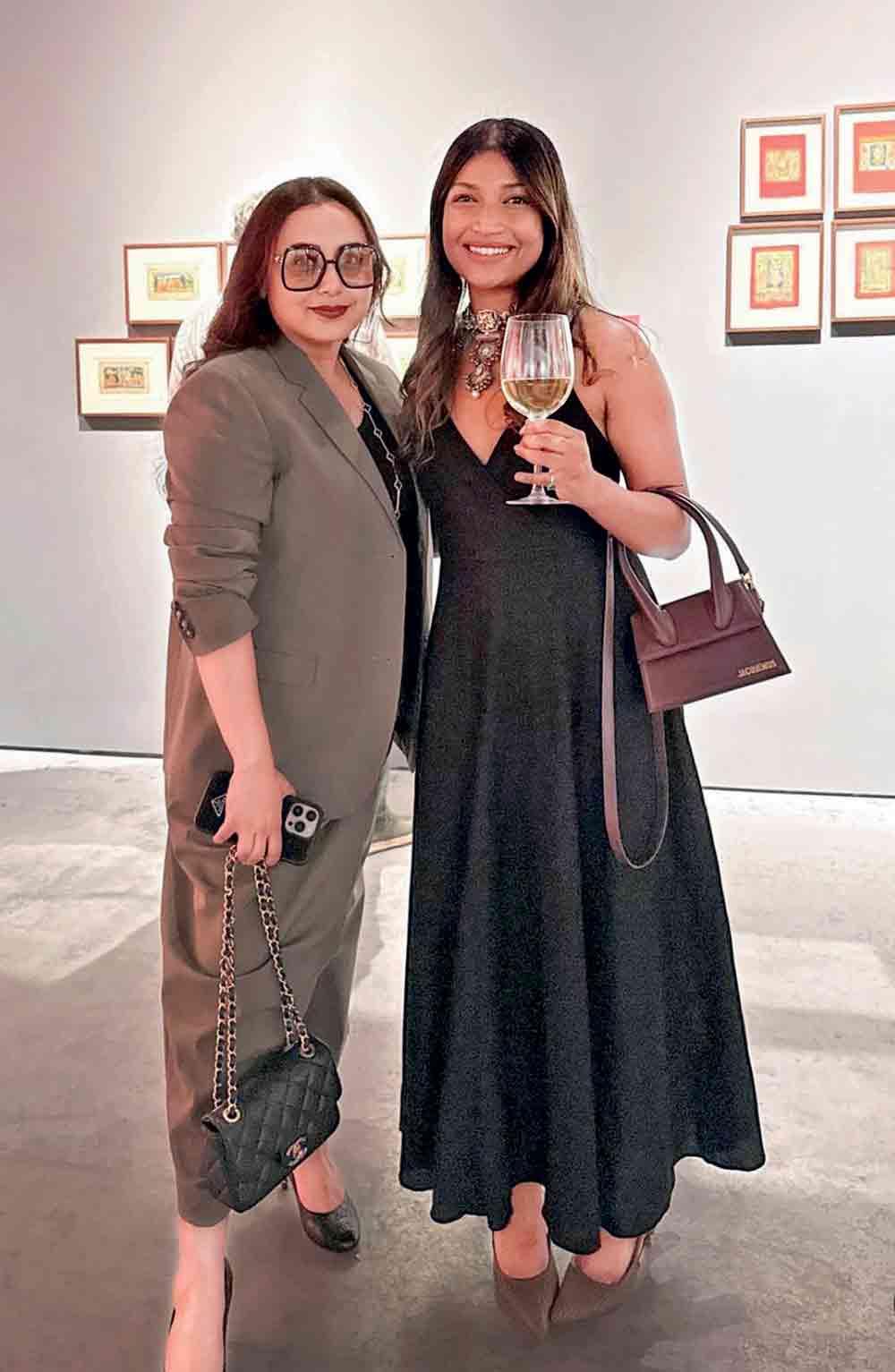
Rani Mukherjee at the private preview in London
Q What made the London show particularly significant for you and for Pichwai art as a whole?
The London exhibition marked a defining moment for both me and for the tradition of Pichwai. Feast, Melody & Adornment at Mall Galleries brought a temple-rooted art form into a global cultural dialogue. It offered the kind of recognition Pichwai has long deserved honouring its devotional richness while highlighting its aesthetic sophistication.
Curating this show felt like carrying centuries of layered heritage into the present, treating it with the seriousness and sensitivity it commands.
Q The exhibition featured more than 350 works. How did you curate this selection and what themes tied it all together?
The curation was both archival and intuitive. The works spanned centuries; from ritual textiles to contemporary reinterpretations, each piece contributing to a broader narrative. The themes reflected seasonal iconography, temple cartography, and even abstracted motifs drawn from Pichwai’s visual language. The inclusion of the Greyscale series offered a more contemplative entry point. Ultimately, the unifying thread was transformation—how the tradition originated and the many ways it continues to evolve.
Q How do you think a UK or global audience responded to such a spiritually rooted, culturally specific art form?
The response was deeply heartening. I’ve always believed that when an art form is rooted in devotion and authenticity, it can transcend borders. The intricacy and rhythm of Pichwai communicate through a visual language that requires no translation. Audiences connected emotionally, with curiosity, reverence, and engagement. Presented thoughtfully, it became not just an exhibition, but a window into a living, sacred worldview.
Q You co-hosted the London exhibition with Divia Thani, Global Editorial Director, Conde Nast Traveller. How did that collaboration come about, and what did it add to the experience?
Divia Thani and I met professionally some years ago, and our connection quickly evolved into a genuine friendship. Her deep understanding of storytelling, culture, and atmosphere made her the perfect collaborator. She was instrumental in encouraging me to bring the show to London. Her Indian heritage, paired with her global perspective, aligned beautifully with the ethos of Pichwai. Together, we shaped a preview evening that was both intimate and intentional, where hospitality met heritage, and tradition was reframed with grace and elegance.
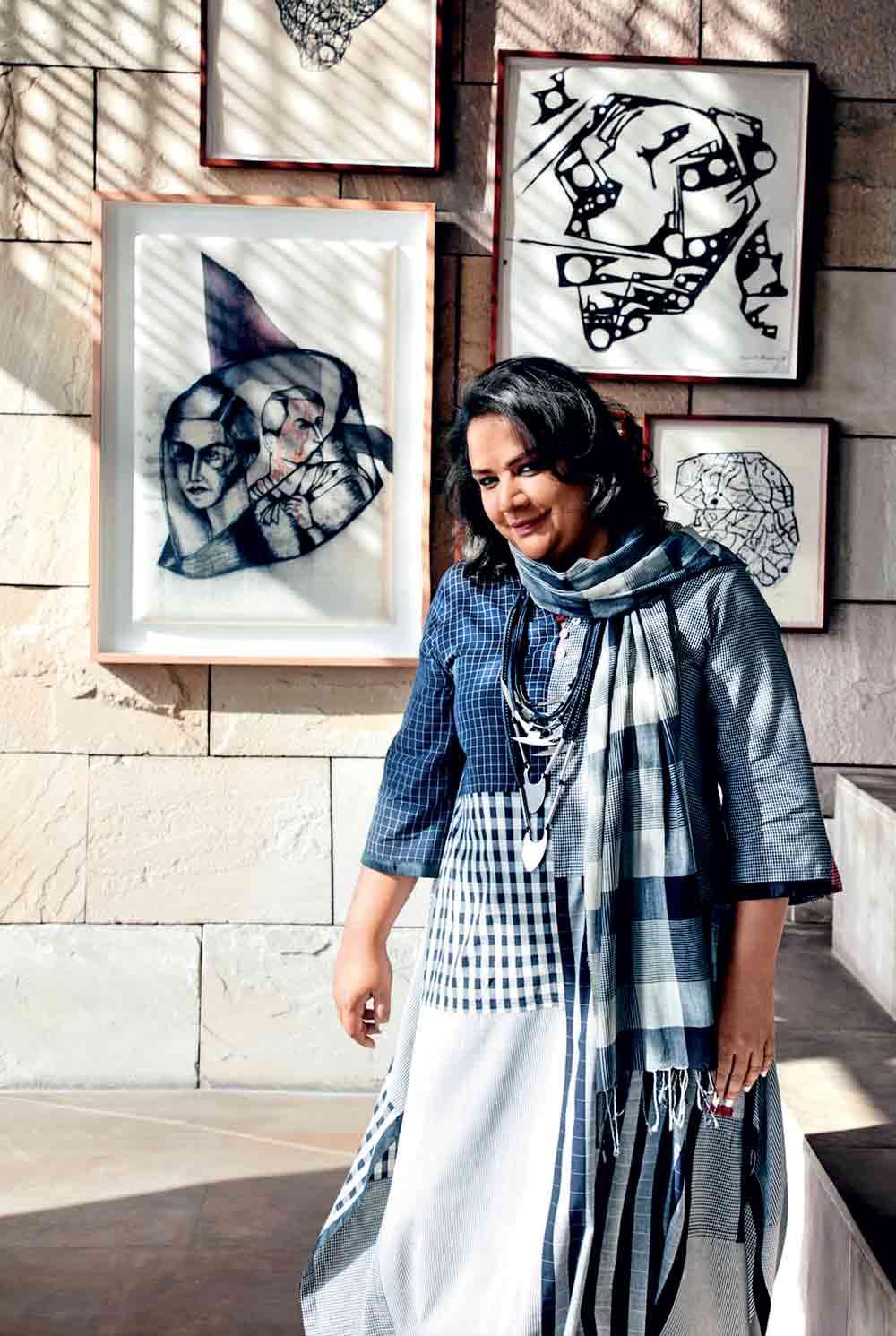
Q Pichwai has traditionally existed outside the gallery system. How have you repositioned it within the contemporary art world?
Initially, Pichwai circulated through informal networks. Our first breakthrough was with the Gujral Foundation, then inclusion in the 2016 India Art Fair, its first traditional art platform. Since then, we’ve exhibited at Kochi-Muziris Biennale and Art Mumbai. It’s been a steady effort to reframe Pichwai as critically relevant, without losing authenticity.
Q You were the first to bring a traditional art form to the India Art Fair in 2016. What did that moment mean for you?
It was a landmark, after years of quiet work, it felt like validation. That moment announced that traditional art belongs in contemporary spaces, and it laid the groundwork for a broader, more inclusive arts dialogue.
Q How have exhibitions in Delhi, Mumbai, and Singapore shaped the global perception of Pichwai?
Delhi allowed us to explore layered storytelling; music, food, poetry. Mumbai was bold and contemporary, set in an industrial venue. Singapore offered cross-cultural innovation, pichwais on Japanese paper, paired with fusion cuisine. Each city showed how rooted traditions can adapt and speak across borders.
Q Are there collaborations with contemporary artists or designers that you’re particularly excited about?
Right now, I’m holding back on external collaborations. The priority is deepening the revival and building sustainable frameworks. Once the foundation is stronger, we’ll open the door to collaborative dialogues. For now, it’s about care, clarity, and cultural grounding.
What’s next for Pichvai Tradition & Beyond after the London show?
We’re returning to London this autumn with two presentations, one at Sotheby’s for collectors, and another at Thyme in the Cotswolds, which is more experiential. These will further explore Pichwai’s versatility and emotional resonance. The journey is far from over; there’s so much more to say and show.
Q How do you envision your role evolving in the next decade? Will you continue to focus on Pichwai or expand into other initiatives?
Pichwai was my starting point, but not the end goal. I’ve joined Tate’s Southeast Asian Acquisitions Committee, and I’m committed to repositioning Indian traditional arts globally. Rajasthan alone has 21 miniature painting schools; I’m beginning to explore those traditions next. Always slowly, always with care.
Q What advice would you give to the next generation of cultural entrepreneurs blending heritage with innovation?
Begin with reverence. Study the form, its philosophy, its people. Innovation must come from knowledge, not disruption for its own sake. Be rigorous with research, understand materials, and treat culture as something you participate in. Let your instincts guide you but ground them in respect. That’s how heritage lives, through reimagination.
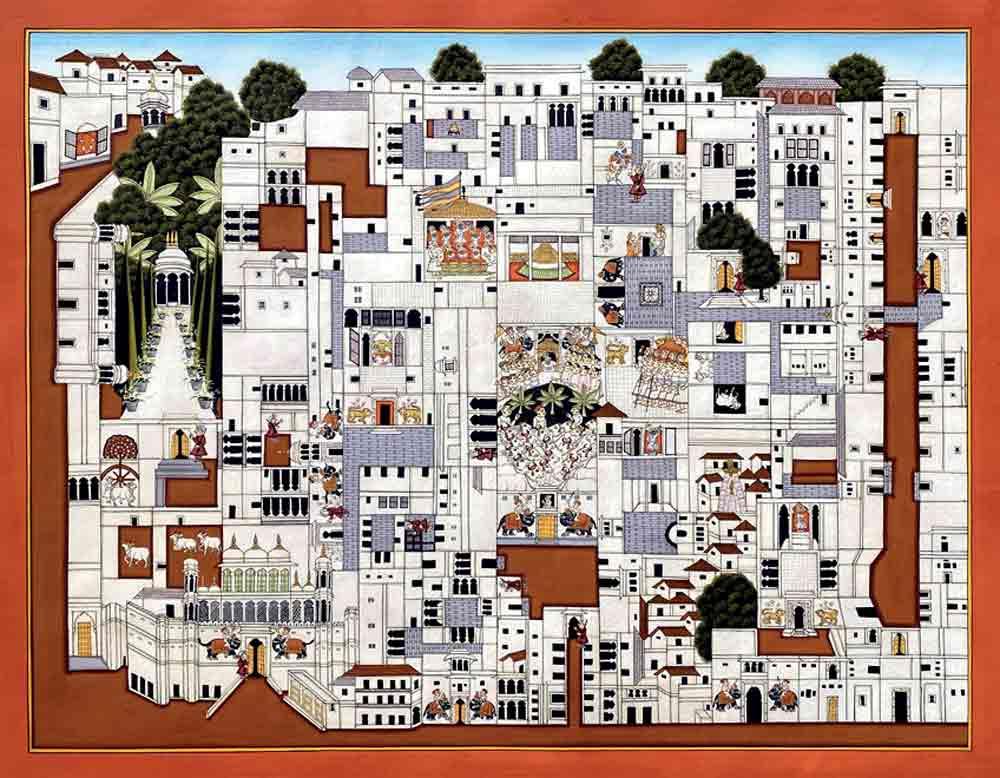
The Haveli of Shrinathji, Stone color on Cloth, 14 x 18 inches
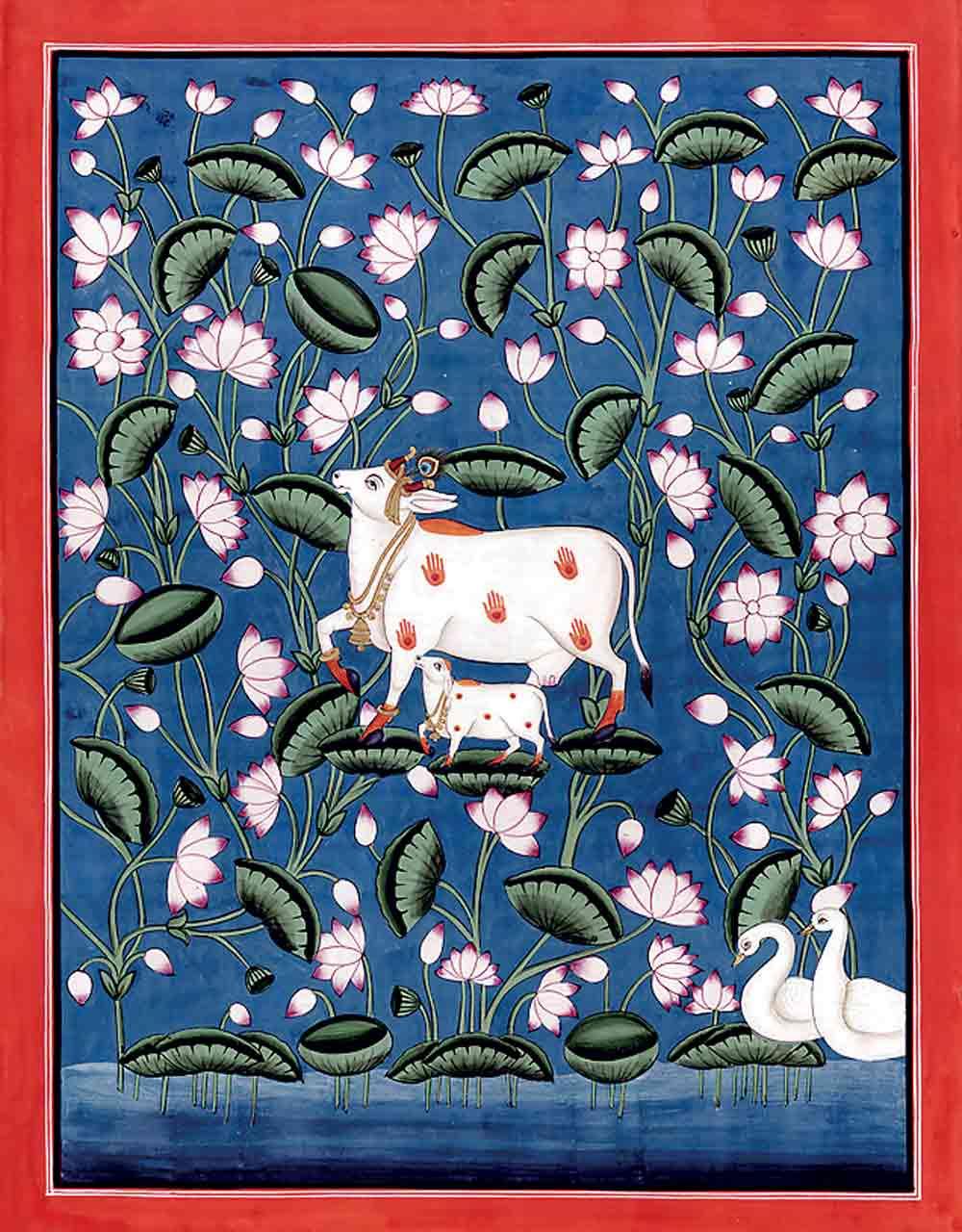
Cows with lotus backdrop 16 x 12.5 in
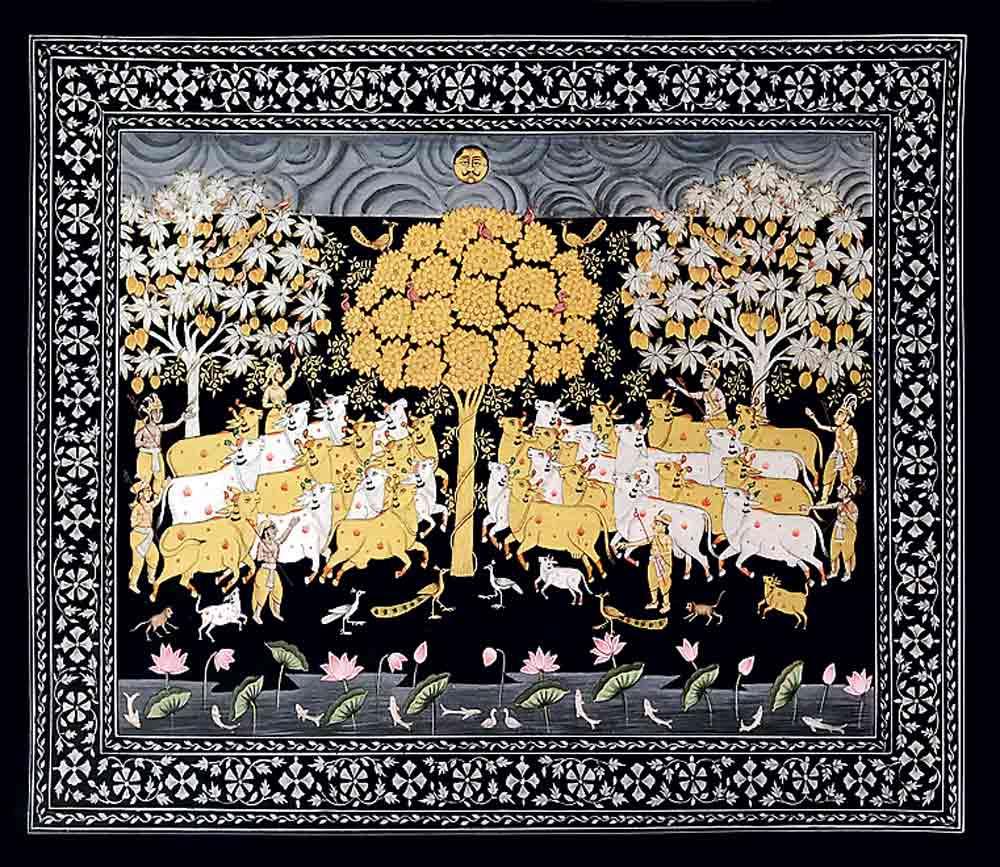
Gopashthami, 24K Gold-Silver & Natural Color on basli, 13 x 15 inch
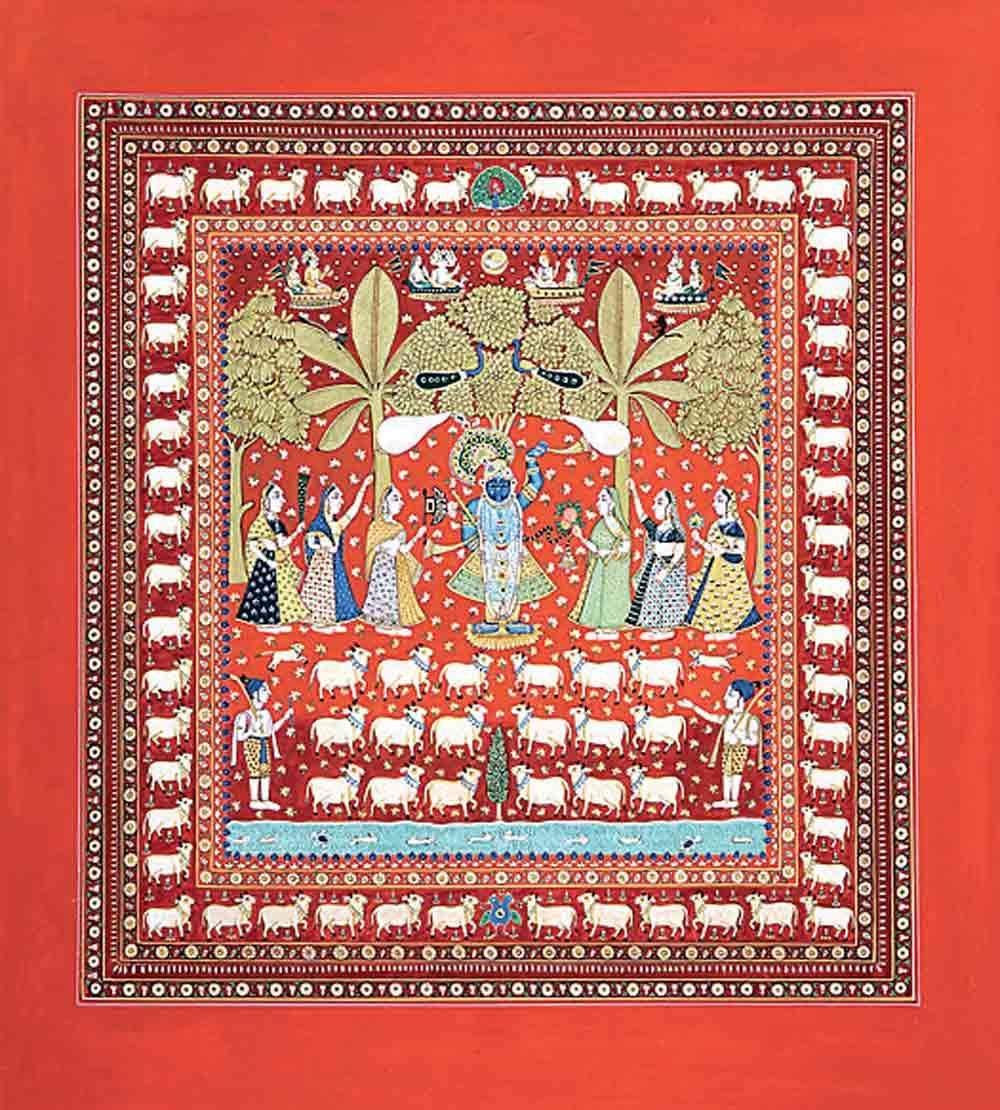
SHRINATHJI SHARAD RED GOLD, 24K Gold && Natural Color on basli, 15 x 13.5 in
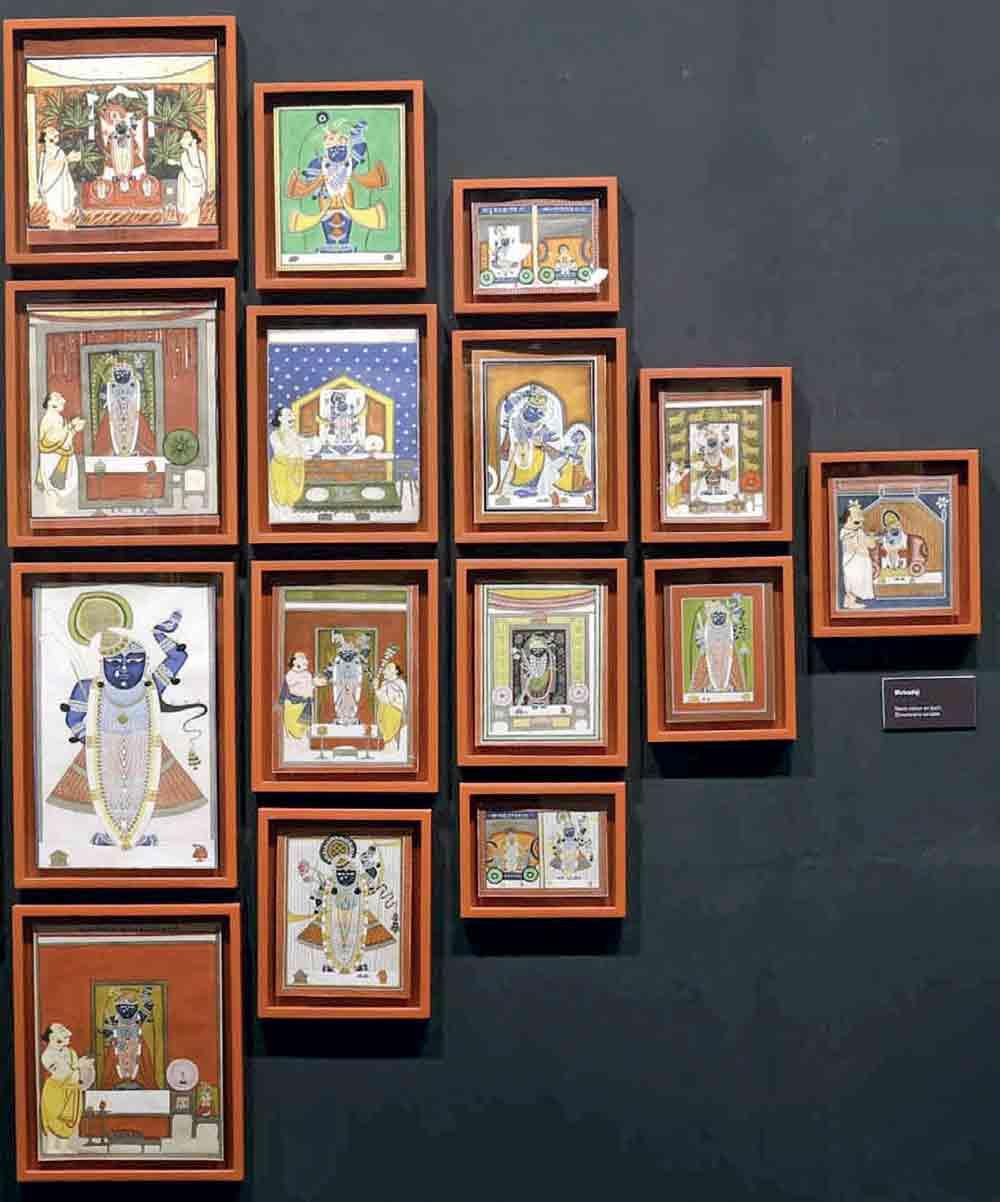
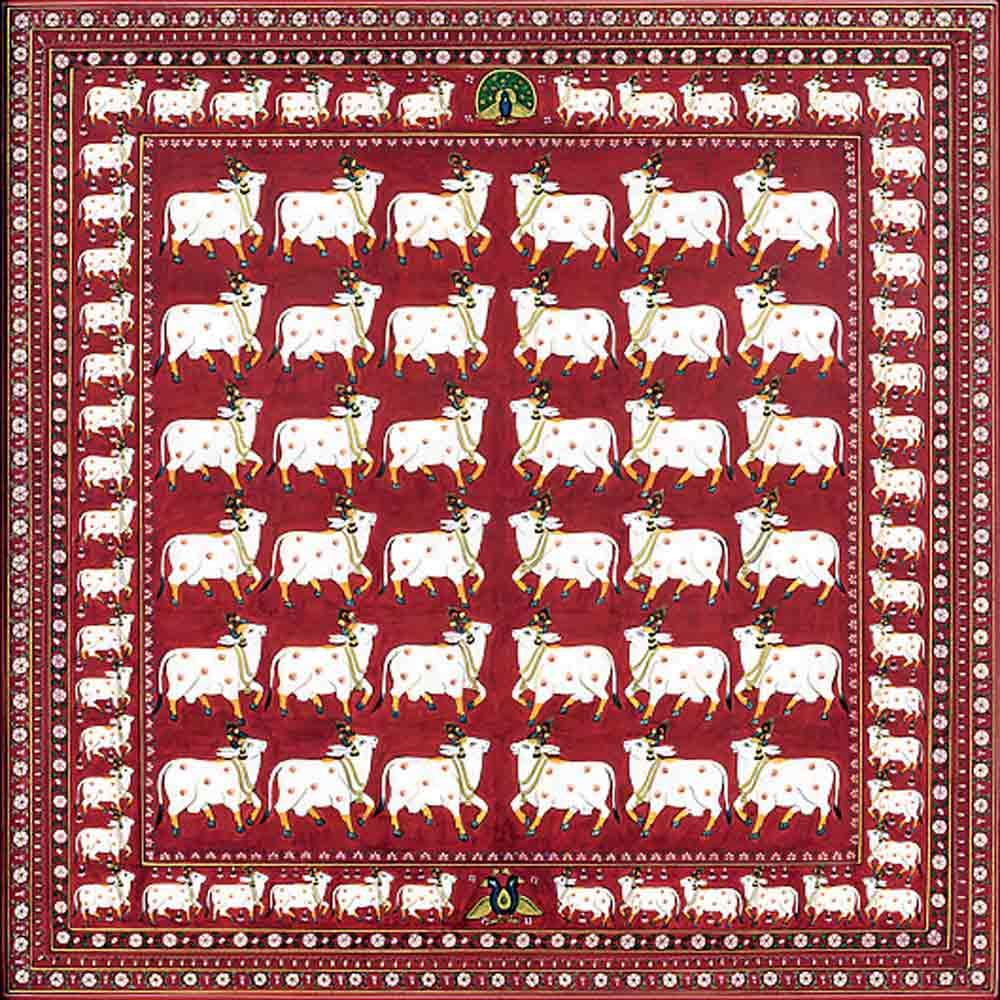
Gopashthami, , 24K Gold && Natural Color on basli, 15 x 15 inch
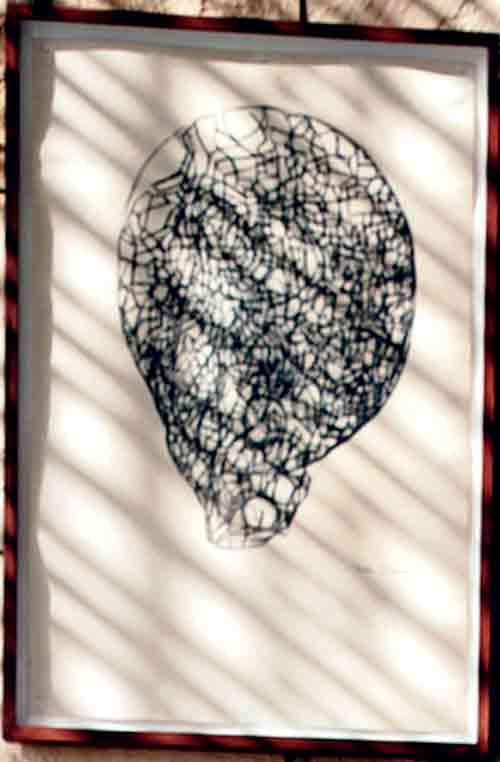
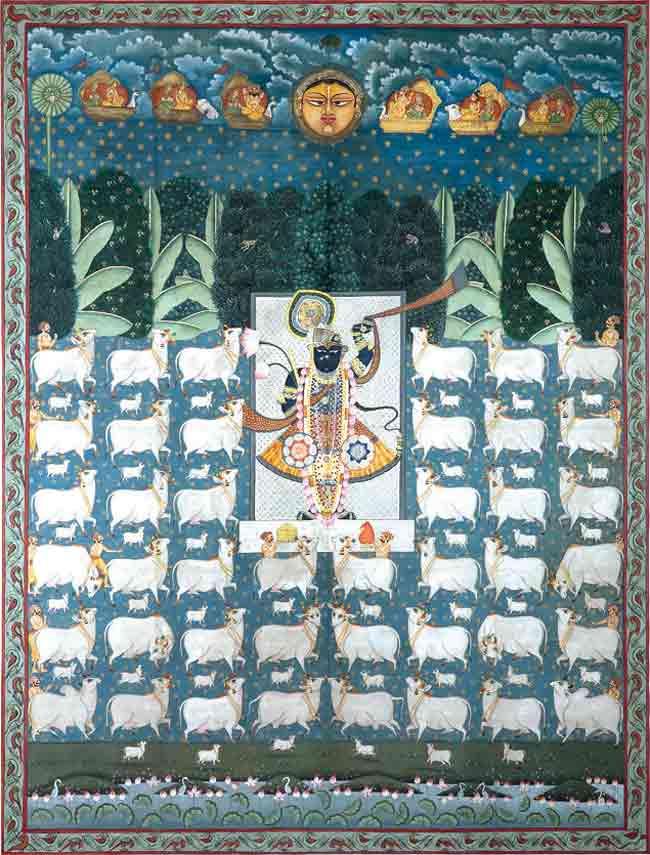
Gopashthami, Stone color on Cloth, 84 x 60 in
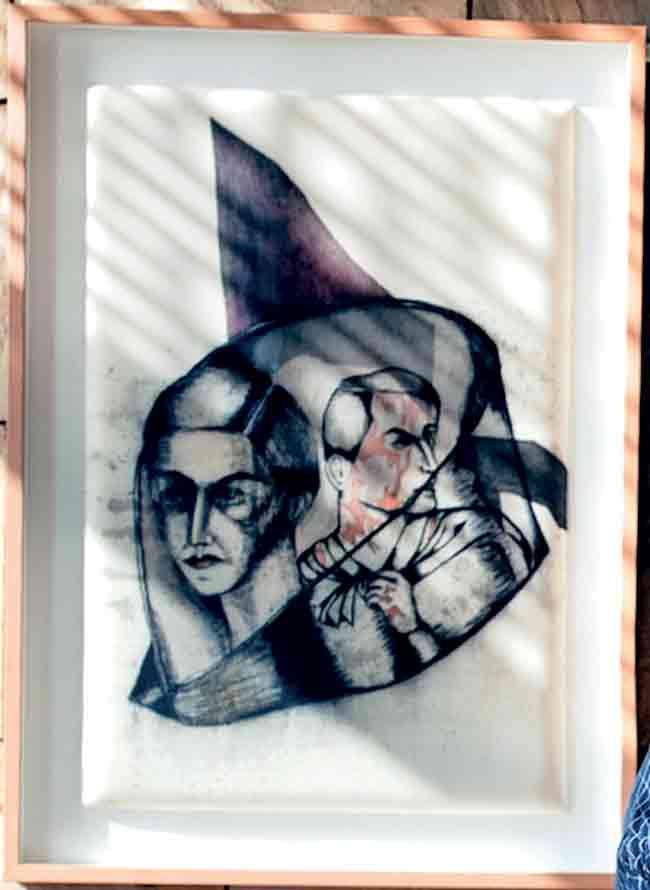
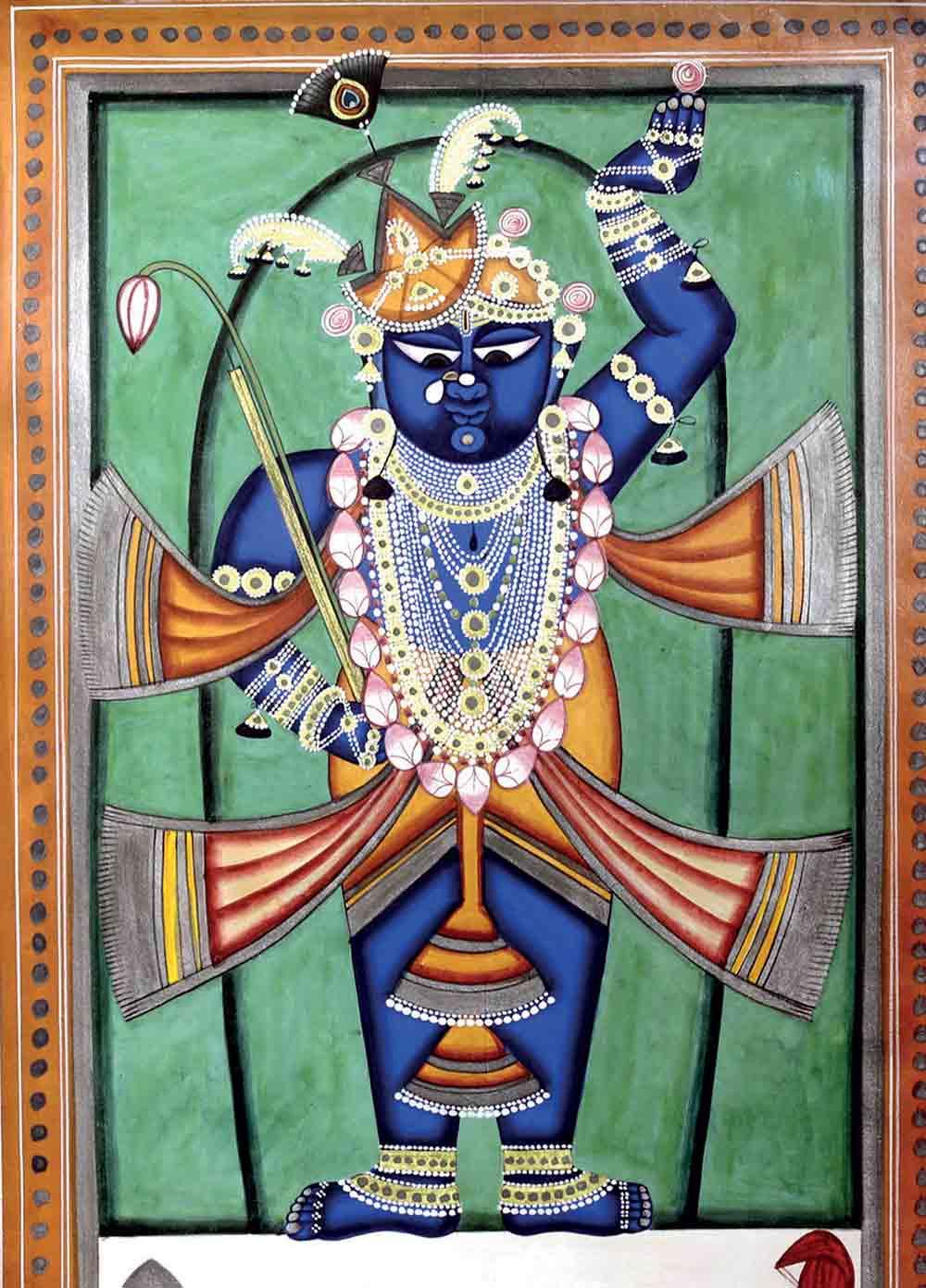
Shrinathji 11 x 7 inches
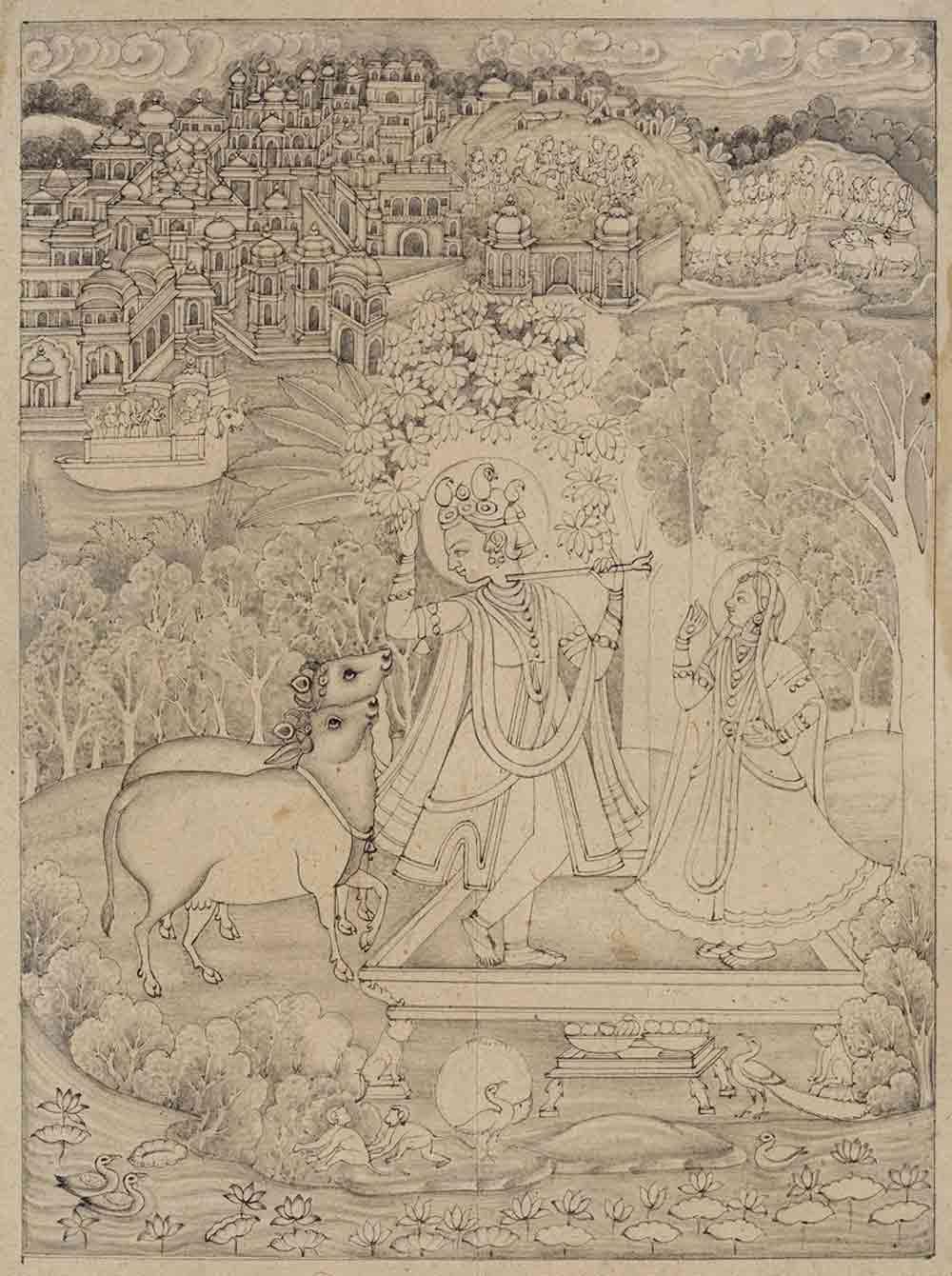
Krishna, Sketch on Basli, 11.5 x 8 in
